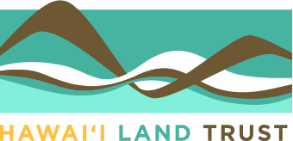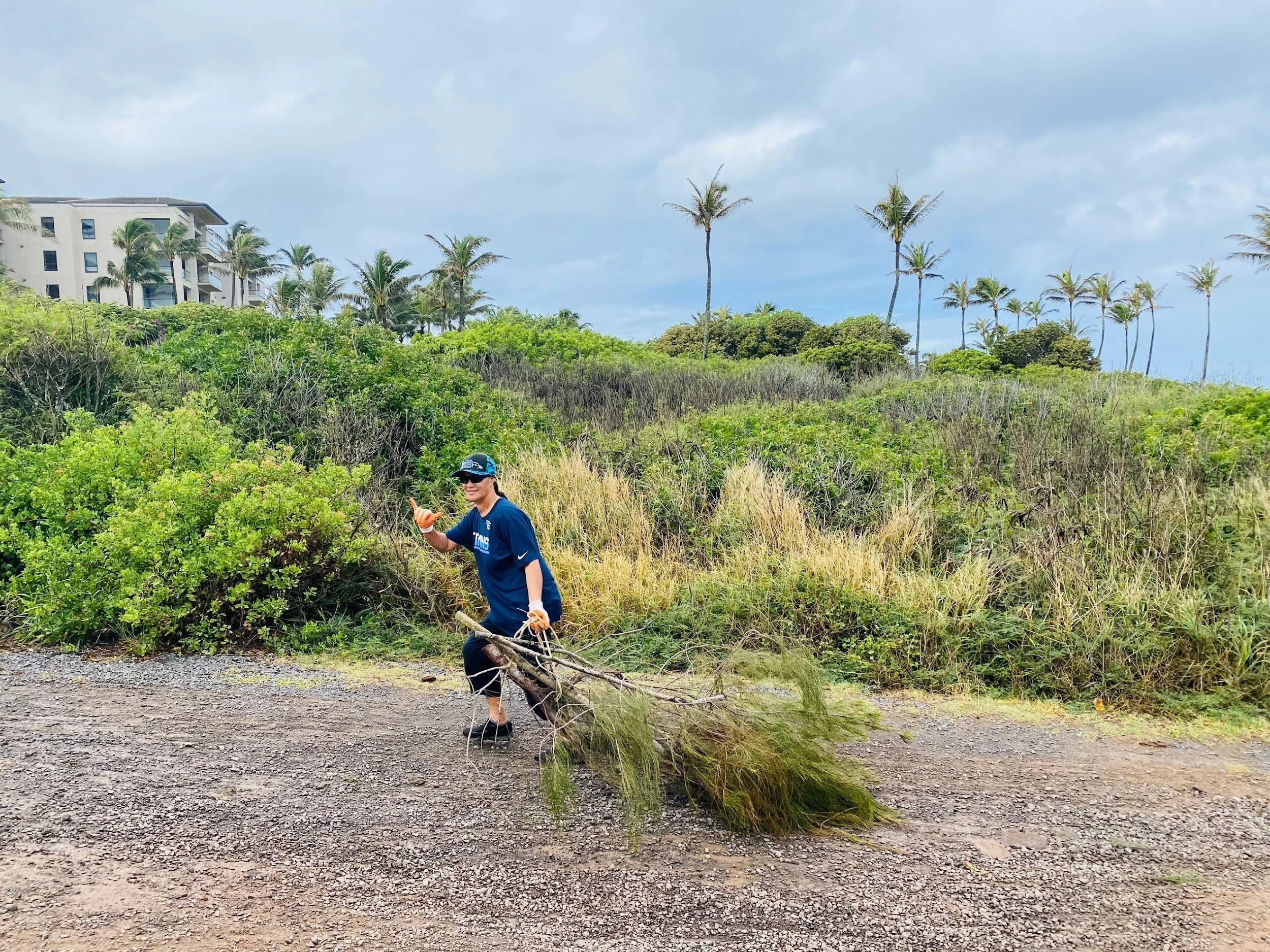Hawea Point, Honokahua, Kāʻanapali, Maui
“Haʻa haʻa, Laʻa laʻa, paʻa paʻa, maʻa maʻa. Mai nā Kūpuna mai.” These are the words shared by ʻOhana Kaina as they opened our workday at Honokahua ma kai, and an area commonly referred to as Hawea Point. Culturally, Hawaiians refer to importance of understanding function, and here, I believe the function of these words provided a process to align oneself before engaging in the sacred work of caring for ʻāina.
Haʻa haʻa: to come with humility
Laʻa laʻa: in respect of the sacred
Paʻa paʻa: in which one becomes solid and secure
Maʻa maʻa: and eventually familiar or experienced
Mai nā Kūpuna mai.
Over the last year, there has been confusion about access at Hawea Point, and disagreement about what is appropriate and legally allowed behavior and access at Hawea. Therefore, Hawaiʻi Land Trust (HILT) has been intentionally spending more time at Hawea, one of the 47 places protected with a permanent conservation easement held by HILT. Our staff and volunteers have been getting to know the layers of ʻohana who call this place home and understand the importance of this area culturally. Honokahua is a food basket of Maui where ʻohana continue to hold on to their relationships with the resources and place that has sustained them for generations. As with many places in Hawaiʻi today, the abundance of resources and overall health of the land are of concern. When planning how we as a community should care for a place, it is helpful to remember the historic function of that place, and find clues as to its function in the traditional place names. When walking to and along the coastline, you can’t go more than a minute before coming across the traditional place name of a bay, tide pools, rocks, inlets, or rock terraces. There are also many traditional names and observations of the winds, rains, and clouds that travel from ʻUlupalakua and Honolua, and the many currents and channels running from Molokaʻi and even Niʻihau. The ʻohana of Honokohau have maintained these names and observations for generations, and we collectively have so much to uplift and perpetuate in this very special place. Hawaiʻi Land Trust is privileged to serve a small function here at Hawea Point to ensure the land is conserved and the coastal trail is accessible to the public. We look forward to deepening our relationships and collaboration with the ʻohana of Honokohau, the Kapalua Resort Association and its residents and guests, the Maui Nui Seabird Recovery Project, and Puʻu Kukui Watershed Preserve to ensure that the health and abundance of Honokahua lives on in perpetuity. We envision a community that is clear that they may access the coastal trail, and also feels a deep responsibility to mālama one another and Hawea’s lands, waters, and native plants and birds. Lookout for hands to ʻāina volunteer opportunities that we hope to start up again in the winter of 2022 as the ʻuʻau kani, or Wedge tailed sheer-waters, leave their nests.
— Shae Kamakaala, Director of ʻĀina Protection
The brown tarp on left is filled with green waste collected by participants in a volunteer clean-up effort in March 2022. Mahalo to our partners the Kapalua Resort Association, Maui Nui Seabird Recovery Project (MNSRP), Puʻu Kukui Watershed Partnership, and the Hearts of Montage. From left to right: Shae Kamakaala, HILT’s Director of ʻĀina Protection; Frank Violi Jr., Kapalua Resort Association Director; James Crowe, HILT Land Stewardship Manager; Joshua DeCambra, MNSRP KUPU Intern; Mariah Rivera, MNSRP KUPU Intern; Cece Frisinger, MNSRP Staff Biologist; Makia Lorenzo, Puʻu Kukui Staff; Ihilani Garcia, Puʻu Kukui Staff; Silla Kaina, ʻohana of Honokahua and Cultural Ambassador, Montage; and Kalena Lee-Agcaoili, Puʻu Kukui Staff.
De Ann Kaina, ʻohana of Honokohau and banquets staff of Montage Kapalua Bay, hauling off invasive ironwood trees to our green waste bin.


